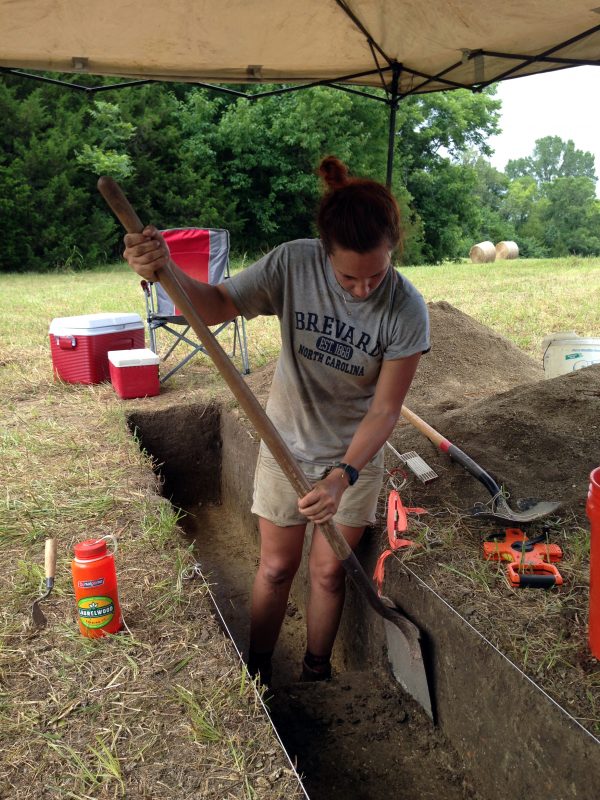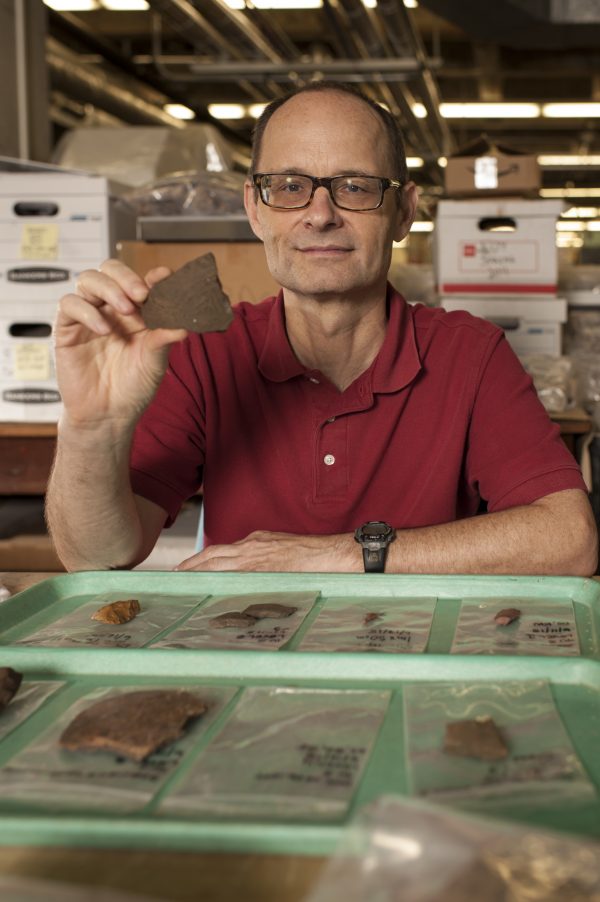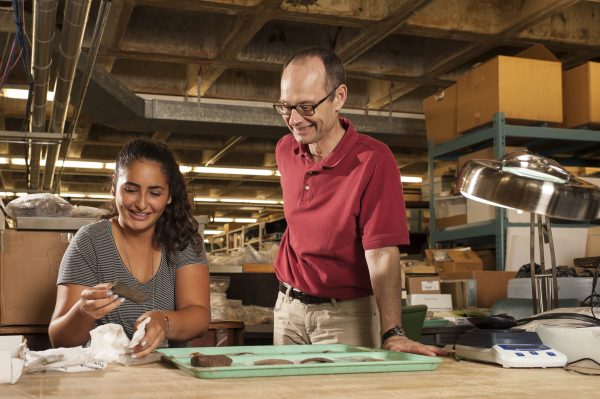
Photo courtesy of Kim Wescott
More than 300 years ago, the Spanish conquistador Hernando de Soto set out from Spanish Florida on an expedition to explore North America. Archaeologists have long debated the exact path he took and what occurred during his journey along the ‘De Soto Trail,’ but at least one point is undisputed: de Soto encountered Chickasaw Indians in the Mississippi village of Chicaza.
Today, however, the 17th century village is lost.
“No one knows where it is,” said Charles Cobb, the Florida Museum of Natural History Lockwood Chair in historical archeology, whose research includes exploring the multi-faceted, colonial-era interactions between the Chickasaw, English and French.
“Chicaza could have been decimated by urban development, but that seems unlikely since usually there are historical newspaper accounts of Native American settlements being unearthed during construction,” Cobb said. “We haven’t seen anything like that related to Chicaza. So, we think it’s still out there.
The discovery of Chicaza could enhance knowledge about Native American and European relations and reveal information about de Soto’s expedition. Cobb said because few sites related to the Spanish explorer have been excavated, archaeologists do not have a clear picture of what life was like for the conquistador and his followers. Cobb would like to know how the Spaniards survived. Did they adopt Native American ways? What did they wear after their original clothing deteriorated? These are important questions that remain unanswered, he says.

Florida Museum photo by Kristen Grace
“Finding Chicaza itself…we could find it next year, or it could be five years from now,” Cobb said. “There is debate among archaeologists about what the discovery of Chicaza will tell us. Historically, it would be very fascinating.”
In the 17th century, the Chickasaw migrated north through the area of northern Mississippi known today as the Golden Triangle, formed by the cities of Columbus, Starkville and West Point. Cobb said the migration was possibly due to conflict or the arrival of Europeans.
The Golden Triangle is rich with Native American history and is the current focus of Cobb’s and his colleagues’ excavations. In June 2015, Cobb said archaeologists bounced around this area, surveying and uncovering pottery and small artifacts to date sites and allow them to map out the timing and path of the Chickasaw migration. At one location near Starkville, Mississippi, researchers found metal artifacts of probable Spanish origin such as iron chisels and axes.
“You don’t find metal very often on Native America sites because they hadn’t mastered smelting,” Cobb said.
Although the presence of iron could point to an exchange network with Franciscan missions in Florida, it could also mean de Soto was once there.
“When de Soto stayed at Chicaza, the Chickasaw got tired of feeding his crew and the Spanish were heavy on the landscape, hunting and such,” Cobb said. “Eventually, the Indians attacked and flushed them out. When they did, metal and other materials were left behind.”
Cobb and his fellow researchers plan to conduct more in-depth excavations at promising sites like the one near Starkville next year.
From the De Soto Trail to the Trail of Tears
The Chickasaw of the 17th and 18th centuries were both warriors and agriculturalists, with a taste for European metal goods; even infants were sometimes buried with copper or silver bangles, a type of bracelet. They played a gambling game called chunky, where participants rolled a round stone and shot an arrow where they thought it might land. Known as the ‘Spartans of the Mississippi Valley,’ they had a Red Chief during times of war and a White Chief in times of peace.
But many of today’s Chickasaw youth around the country are out of touch with this rich historical and cultural heritage.
“It’s hard to maintain that history if you’re living in the middle of LA,” Cobb said.
The Chickasaw people were forced to move from Mississippi to Indian Territory during the Great Removal on the Trail of Tears. In 1837 the Chickasaw nation purchased a new homeland in Oklahoma, far removed from their original southeastern lands. Since then, movement and assimilation has caused many Chickasaw youth to become disconnected from their heritage.

Florida Museum photo by Kristen Grace
In an effort to reconnect Chickasaw college students to their ancestral roots, the Chickasaw Nation Native Explorers Program in Oklahoma provides hands-on experiences to expose participants to Chickasaw culture. This year, the program included visits to excavation sites where Cobb and UF anthropology students Kristen Hall and Domenique Sorresso were searching in the southern heat and humidity for traces of the past.
The Chickasaw students braved the elements to literally touch their heritage for the first time, Sorresso said.
“Examining artifacts with young Chickasaw brought a different aspect to what we were looking at,” Sorresso said. “Having someone there who actually connects to what you’re finding really widens your perspective.”
Hall, who usually studies prehistory, said this was the first time she’s worked at archaeological sites with such strong connections to the present. She and Sorresso said the experience expanded their knowledge of the Southeast and broadened their ability to better analyze the past.
The program took students to several archaeological sites within the Golden Triangle. They also visited Tuscumbia Landing, a Trail of Tears site in Alabama, and stayed overnight at Plymouth Bluff in Columbus, Mississippi, a Chickasaw and Choctaw heritage site, among other stops.
Cobb said it will be interesting to observe what long-term impact the experience has on the Chickasaw youth.
“It made it real for them,” Cobb said. “You can hear that you’re Chickasaw and you can know that you’re Chickasaw, but to be the first person to pick up a Chickasaw pottery sherd that your ancestor put in the ground 300 years ago…that’s something else.”
Learn more about the Historical Archaeology Collection at the Florida Museum.